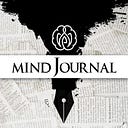Awake at Night? Understanding What Is Dyssomnia and Its 3 Major Types
If you find yourself lying awake at night wondering why you can’t get a good night’s sleep or if you keep waking up in the middle of the night unable to fall back asleep, you might be suffering from dyssomnia. In this article, we’ll explore what dyssomnia is and how to overcome it. We’ll also discuss the causes of dyssomnia, treatment options, the types of dyssomnia, and how dyssomnia compares to parasomnia.
Dyssomnia refers to various sleep disorders that disrupt a person’s ability to achieve restful sleep and maintain a consistent sleep pattern. Individuals suffering from dyssomnia may have difficulty falling asleep, experience irregular sleep patterns, and wake up repeatedly during the night. This disruption can lead to moodiness, exhaustion, difficulty concentrating during the day, and a loss of energy. Dyssomnia can be likened to trying to read a book in a room with a flickering light bulb. Each flicker of the light interrupts your reading, making it challenging to concentrate and enjoy the book fully. Similarly, dyssomnia interrupts the natural flow of sleep, leading to difficulties in falling asleep, frequent awakenings during the night, irregular sleep patterns, and non-restorative sleep. These disruptions can significantly impact a person’s overall sleep quality and well-being, resulting in fatigue, irritability, and decreased daytime functioning.
Causes of Dyssomnia
The causes of dyssomnia are diverse and can include various factors that disrupt an individual’s ability to initiate or maintain sleep. These factors can be categorized into different groups:
1. Internal Factors: Some dyssomnia sleep disorders originate from within the body, often involving dysfunction in the body’s internal sleep regulation mechanisms. Conditions such as restless leg syndrome, periodic limb movement disorder, and certain types of insomnia fall into this category.
2. External Influences: External factors can also contribute to dyssomnia, such as lifestyle choices, sleep hygiene practices, and exposure to stressors that interfere with the sleep-wake cycle. Conditions like nocturnal eating syndrome can result from external influences.
3. Mental Health: Mental health challenges, such as depression and anxiety, often intersect with dyssomnia sleep disorders. Individuals dealing with these conditions may struggle to achieve restorative sleep, exacerbating their mental health challenges.
4. Shift Work: Work-related factors, especially night shifts and irregular work schedules, can significantly impact sleep patterns. This can lead to the development of “shift work sleep disorder,” where individuals find it challenging to maintain a consistent and restful sleep routine due to their work demands.
5. Circadian Rhythm Disruptions: Dyssomnia can also arise from disruptions to the body’s circadian rhythms, particularly when work or travel schedules do not align with traditional day and night hours. This can lead to difficulties falling asleep and staying asleep, similar to the effects of jet lag.
Types of Dyssomnia
There are three major types of dyssomnia sleep disorders:
1. Intrinsic Sleep Disorders: These disorders originate from within the body and can disrupt sleep patterns. Common intrinsic sleep disorders include restless leg syndrome, sleep apnea, insomnia, and periodic limb movement disorder.
2. Extrinsic Sleep Disorders: These disorders are influenced by external factors that affect sleep patterns. Conditions like nocturnal eating syndrome can be a result of extrinsic influences, including lifestyle choices and sleep hygiene practices.
3. Circadian Rhythm Sleep Disorders: Circadian rhythm sleep disorders can affect individuals whose work shifts do not align with traditional day and night hours. These disorders can be challenging for people who work night shifts or have irregular schedules.
Dyssomnia vs. Parasomnia
Dyssomnia and parasomnia represent two distinct categories of primary sleep disorders:
Dyssomnia primarily involves difficulties with sleep initiation and maintenance and can result from various underlying causes, including internal dysfunction, external factors, or disruptions to circadian rhythms.
Parasomnia is characterized by abnormal activities during sleep and can be further divided into non-REM (rapid eye movement) and REM parasomnia. Parasomnia often has a genetic component and includes activities such as sleepwalking and sleep terrors.
Both dyssomnia and parasomnia can significantly impact an individual’s sleep quality and overall well-being. Seeking guidance from a healthcare professional is essential if you or someone you know experiences sleep disturbances, as it is the first step toward achieving a restful night’s sleep.
